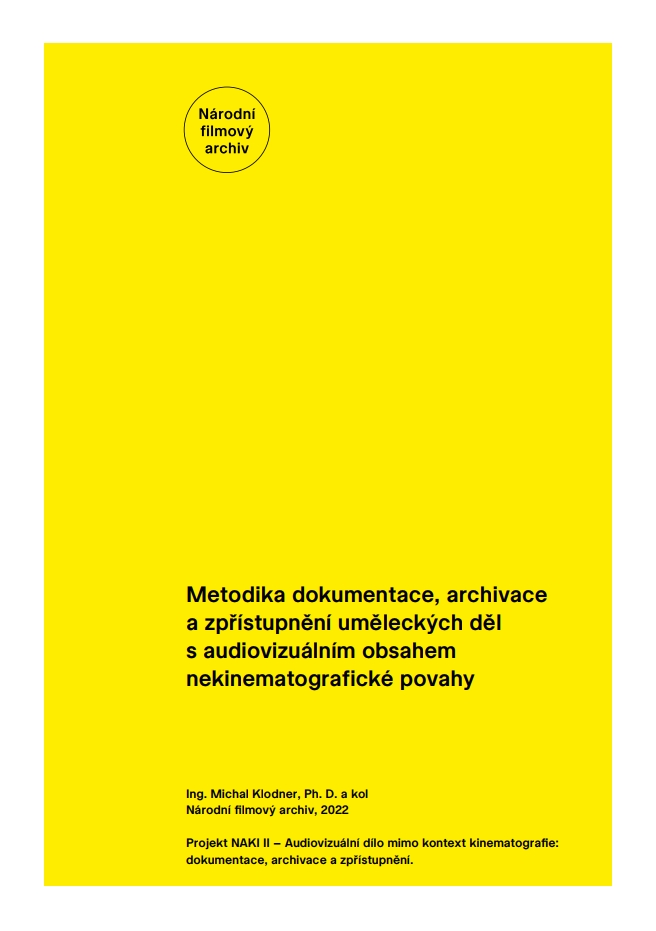Methodology
The method of documentation, archiving, and accessibility of artworks with audiovisual contents of a non-cinematographic nature is intended for memory institutions of both the museum and archive variety that already administer or are interested in collecting art of the moving image with the aim of its long-term storage and accessibility.
→ Download methodology (in Czech, PDF)→ Certification (PDF)
Related documents:
- Technico-organisational Guidelines for Operating an Archival System of the Moving Image, 2022. (in Czech, PDF)
- Pilot Scheme for Creating and Making Accessible Digital Archive Packages with a Focus Towards Artworks with Audiovisual Content of a Non-cinematographic Character, 2022. (in Czech, PDF)
Given the obsoleteness of various historical media of the moving image, the methodology does not focus on long-term storage of the original media, which include a broad spectrum of electromagnetic and optoelectric image formats. Given the increasing risk of degradation and the decreasing availability of the original playback devices, processes have been proposed for their digitisation and protection in this new digital form. Even in the case of film material, we work with the digital form both for reasons of accessibility using current means and storage. Furthermore, the scope of the methodology does not include the archiving of other material components of multimedia works that may form part of the installation. The methodology does not establish new standards in the field, but instead presents a combination of existing standards and methods that are necessary or appropriate for application in the field of art of the moving image in order to ensure the legitimacy of the archival entries and the entire process.
The methodology is applicable in an organisation that receives, makes accessible, and passes on to other subjects digital archival material of the moving image that is copyrighted, the direct originators of which are either the international organisational units of the operator or external organisations. It is best suited to organisations that establish repositories for the collections for long-term digital archiving and accessibility, or else use such a system as a service provided by a specialised archive.
A prerequisite for the applicability of the methodology is that the organisation managing the archival system must have a long-term, sustainable strategy for ensuring the sufficient human and financial resources needed to maintain the technology related to the storage and accessibility of data objects. We assume that the initiator’s activity includes an interest or obligation to archive data in digital form or to protect in this manner information contained on the original media that is threatened by degradation. Given the complexity and difficulty of running a long-term digital archive, which might not be the organisation’s central aim, such an organisation might well make use of archiving as a service provided by a specialised archive, and, in order to focus on its central function (historical, research-based, exhibition-based, production-based, etc.), it uses only partial technical tools to prepare its materials. This methodology establishes no specific business model that would ensure the economic operation of the repository, but it does present the relevant legal requirements for processing and the requirements for legal documentation.
The methodology is not fully applicable to a situation when the demand is for a record-keeping mode and material storage as National Archival Heritage (Národní archivní dědictví), but parts of it respect this possible status, with the standards and requirements in question listed wherever relevant. The methodology, however, is mostly suitable for material that did not pass the selection as archivalia and does not have archivalia status, or else for the preparatory process for processing and storage as archivalia.

